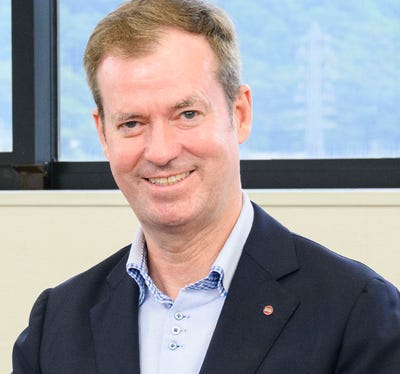5G networks mean big business for telecom infrastructure
Composite plastics stand to benefit from requirements for a dense network of antennae
January 8, 2018

According to the latest research from Strategy Analytics, global 5G smartphone shipments will grow from 2 million units in 2019 to reach an impressive 1.5 billion in 2025, representing 250% year-on-year growth. The 5G category will be the fastest-growing sector of the global smartphone industry for the next decade. Growth opportunities are huge for companies such as Qualcomm, Ericsson, Samsung and Apple. And they are also huge for the molders and resin suppliers that serve the handset market, as well as the corresponding infrastructure market. Large-scale 5G rollout will kick off in 2020 in major cities.
|
Glass fiber composite window bars for sliding doors (above) are a 5G friendly building and construction solution, as are glass fiber composite profiles for door sills (below). |
|
The primary spectrum bands for 5G will likely be in the ranges 3300–4200 MHz and 4400–4990 MHz according to Global mobile Suppliers Association (GSA) and this will mean up to 150 antennae will be required per square kilometer in the densest urban areas. As such they will have to be suitably camouflaged according to Mikko Lassila, Product Business Owner, Telecommunication, at Finnish company Excel Composites Oyj. The company is the largest pultruder in the world and operates eight factories in six countries, including two in South Korea.
These antennae as well as the sensors that will need to be integrated into urban infrastructure represent a massive opportunity for plastics. “For better radio signal permeability through walls and windows, interior and exterior materials will need to have low dielectric constant and loss tangent,” he notes. “Further, for better signal flow outdoors, the infrastructure needs to be as ‘transparent’ as possible.”
Lassila identifies potential materials for the 5G era that include epoxy/fiberglass, Polyacetal, acrylonitrile-butadiene-styrene (ABS), polyamide (PA) 66, polyetherimide (PEI), polystyrene (PS), polycarbonate (PC) and ultra-high molecular weight polyethylene (UHMWPE). The dielectric constants of these materials range between 2.20 and 4.90, while their loss tangents range between 0.0005 (PS) and 0.021 (PA).
Lassila notes that current ‘passive housing’ designs are causing enveloping of buildings, with signals consequently getting weaker and in some cases not getting in or out at all. Passive housing (Passivhaus in German) is a rigorous, voluntary standard for energy efficiency in a building, reducing its ecological footprint. It results in ultra-low energy buildings that require little energy for space heating or cooling.
Lassila also sees more widespread opportunities for pultruded composites in cityscapes moving forward as the world gets more urbanized and heads, in the words of Kjell Nordström — Professor, Swedish school of Economics, towards a global network of 600 major cities instead of 218 countries. “Composites deliver design freedom, are lightweight for ease of assembly onsite and offsite, have low maintenance requirements, and can be used for affordable housing, in addition to their superior radio frequency properties.
About the Author(s)
You May Also Like






